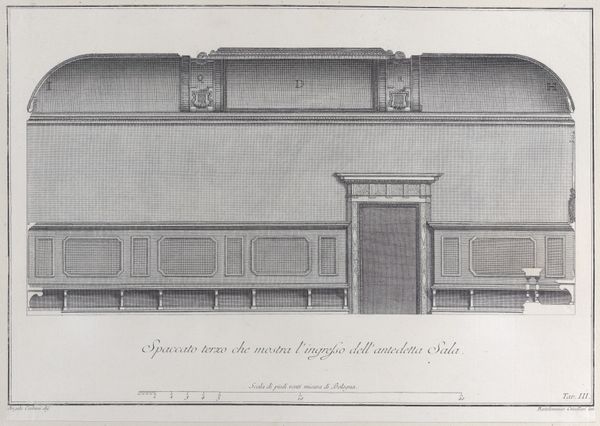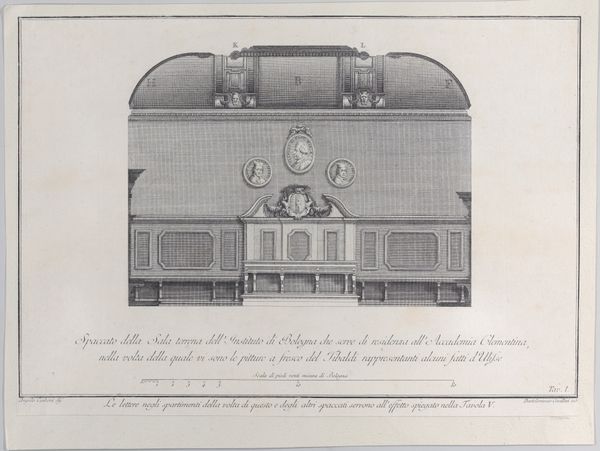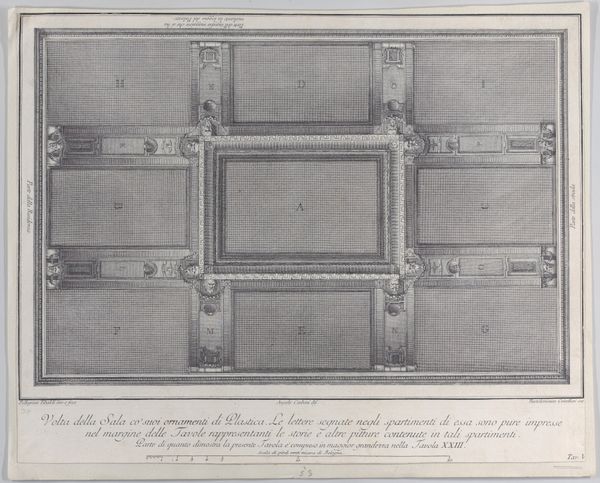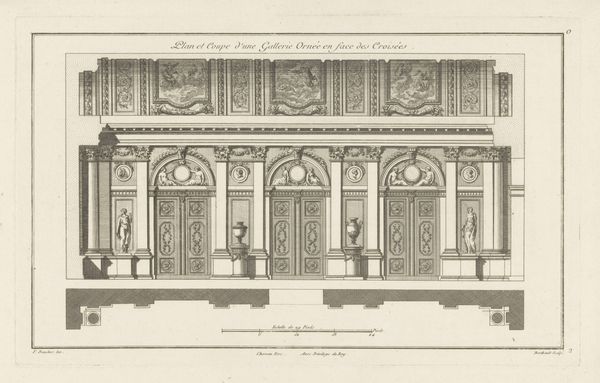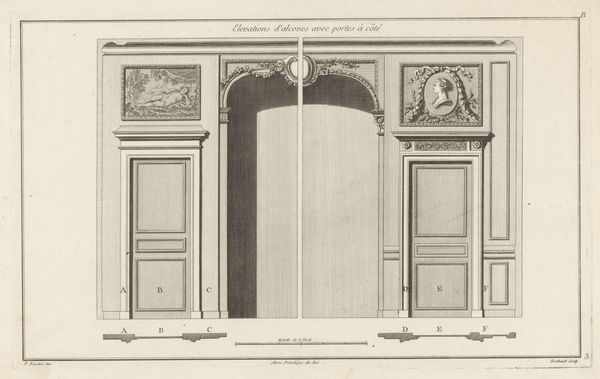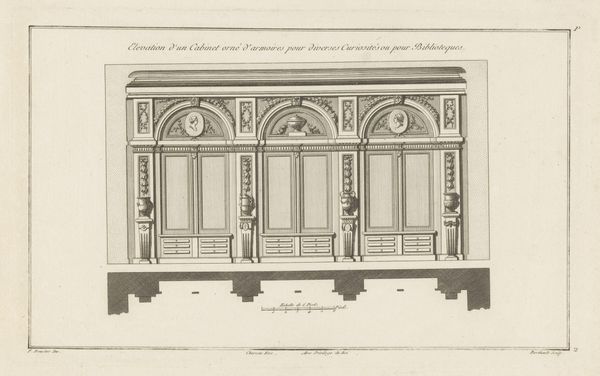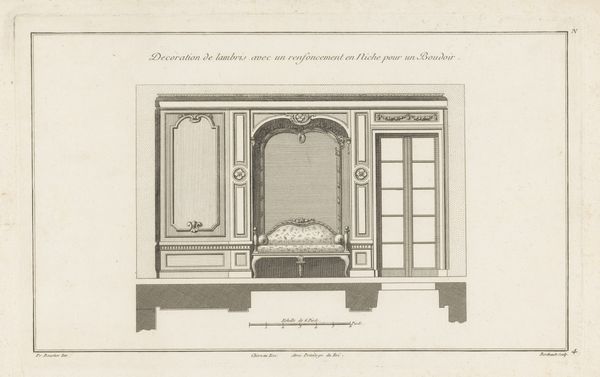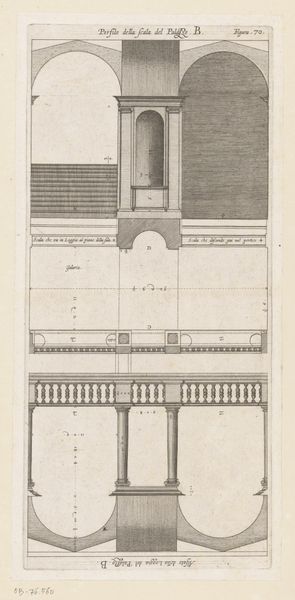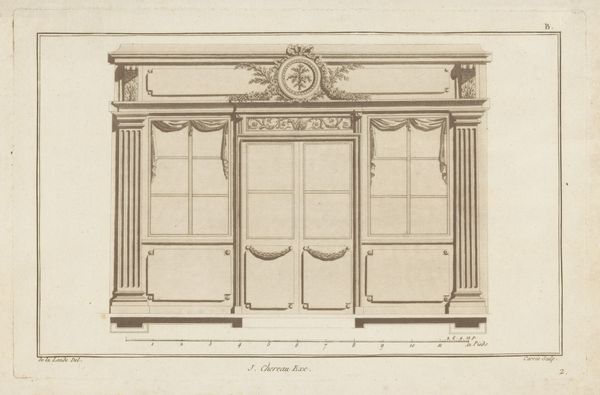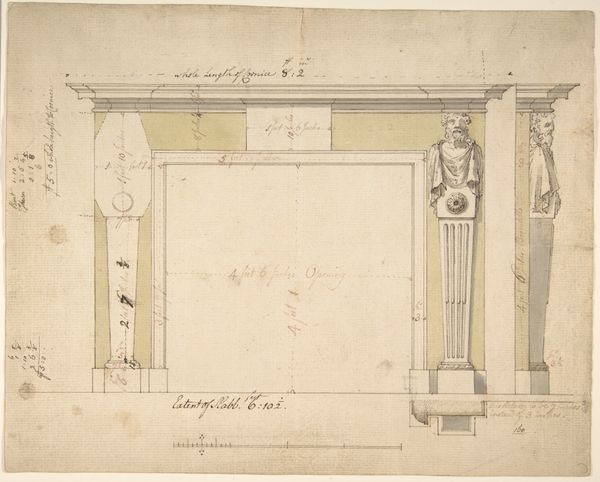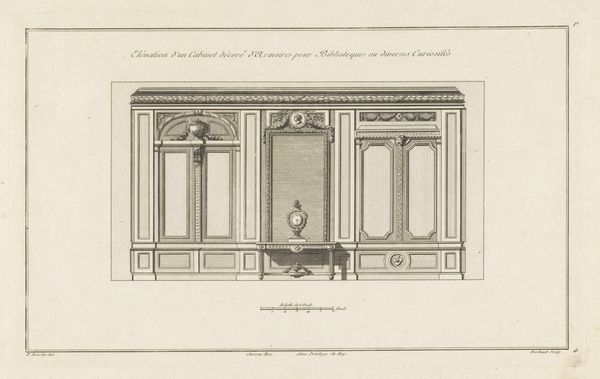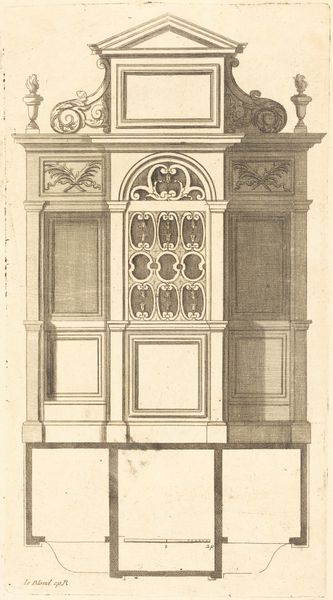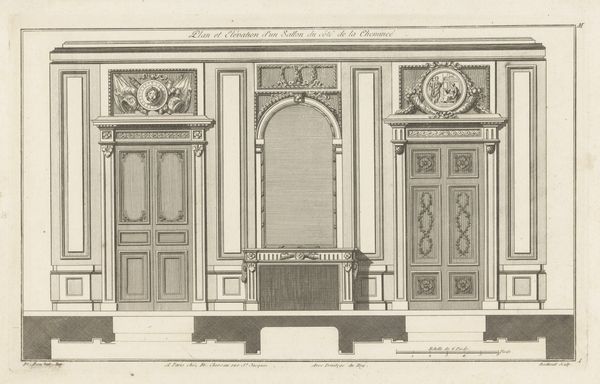
Plate 4: cross-section of the Hall of the Institute of Bologna, with the entrance to the room 1756
0:00
0:00
drawing, print, engraving, architecture
#
architectural sketch
#
drawing
#
aged paper
#
baroque
# print
#
architectural plan
#
architectural design
#
architectural concept
#
geometric
#
architect
#
arch
#
architectural section drawing
#
architectural drawing
#
line
#
architecture drawing
#
architectural proposal
#
cityscape
#
engraving
#
architecture
#
building
Dimensions: Sheet (Trimmed): 10 13/16 × 15 1/8 in. (27.4 × 38.4 cm)
Copyright: Public Domain
Curator: Well, let's start with this striking piece: "Plate 4: cross-section of the Hall of the Institute of Bologna, with the entrance to the room" created in 1756 by Giovanni Battista Brustolon. It resides now at the Metropolitan Museum of Art. Editor: Oh, my! What a meticulous rendering! I’m immediately struck by the stark stillness of this cross-section—like a theatrical stage set awaiting its players. It gives me the impression of peeking into the silent anatomy of knowledge. Curator: The beauty is indeed in the detail. As an engraving, consider the processes involved. The skilled hand, the prepared metal plate, the ink carefully applied, and then pressed onto paper—replicating this image. This wasn’t just about art, it was about making architectural ideas accessible and replicable. The institute itself aimed to systematize and distribute knowledge. Editor: Absolutely! And the weight of history seeps through. It reminds me of libraries, of quiet intellectualism, the rustling of paper, ink-stained fingers, all brought to life through this two-dimensional drawing. Do you think the geometric precision speaks to its original function as an architect's blueprint, with the arches and repetitive shapes conveying structure, order? Curator: Without question! The medium speaks to function, in addition to artistry. These architectural drawings, like this one, became commodities, allowing designs and styles to circulate and inspire across geographical boundaries. It shaped material culture, even the cities around us. Editor: But it’s more than just architectural data, wouldn’t you agree? Look at how light might be manipulated through that window. It hints at an experience—the way the space would feel. All of this rendered by someone's imagination! You can almost see the baroque aesthetic reflected on that geometric wall! It is almost an act of poetry. Curator: A poetry borne from purpose, perhaps! It reminds us how architecture reflects cultural ambition and, indeed, its economic and material underpinnings. It provokes us to appreciate architecture and consider the flow of ideas. Editor: Agreed. A powerful silent testament, isn’t it? Like eavesdropping on a long-lost conversation between intellect and artistry, frozen perfectly in time.
Comments
No comments
Be the first to comment and join the conversation on the ultimate creative platform.
